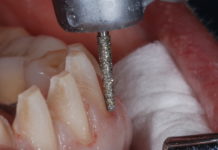
Discover the Potential of your Dentistry.
When Amazon launched in Seattle, WA, in 1995, the online venture only sold books. But according to an April 2017 article in Business Insider magazine, founder Jeff Bezos “knew from the very beginning, he wanted Amazon to be ‘an everything store.’”
Traditional bookstores, adhering to an old model of buying minimum stock levels from distributors, quickly found themselves unable to compete with the online startup. Amazon famously went on to disrupt the booksellers’ industry, the publishing industry in general, and eventually all of retail.
How did Bezos do it? By thinking beyond traditional ways of doing business. Business Insider reported that “book distributors required retailers to order ten books at a time, and Amazon didn’t need that much inventory yet (or have that much money).”
Instead of adhering to the antiquated model of buying more books than they needed, Amazon bought only what their customers ordered. To get around the minimum requirements from the distributors, Amazon “would order [the] one book they needed and nine copies of an obscure lichen book, which was always out of stock.”
This loophole in the old model helped Amazon build the business it is today. Today, Amazon sells groceries, cloud computing, online entertainment, and more. They are a classic example of thinking beyond the traditional confines to generate vastly greater opportunities.
During my years working in the dental industry, I have come across many doctors who don’t realize their true potential, even though they understand that their work and skills are incredibly valuable. They’re confined to the limits of the day-to-day grind of a traditional dental practice.

With the start of a new year, it’s a great time to evaluate your practice and consider implementing strategies that will build on your successes. There’s no need to spend another year maintaining the status quo. By understanding how to grow your practice, you can end 2018 being in a much stronger position than when you began.
Identifying Your Drivers
Before forging ahead in a new direction, take a step back and evaluate the current status of your practice. Ask yourself, “What kind of treatments currently drive my practice, and what drives my business?” Identifying key drivers will reveal much about the financial status of your practice and what you may need to change in order to reach the next level. Do you know what’s driving your business?
I’ve identified three drivers common to most dental practices: dental insurance cases, rehabilitation cases, and quality-of-life cases. A combination of all three drivers can usually be found in a dental practice. It’s important to determine what drivers dominate your practice and analyze the ratios of each that are healthiest for your practice.
Insurance-Driven
Insurance cases are common drivers for many dental practices. But it’s important to have a healthy ratio of insurance-driven treatments to non-insurance treatments. As every dentist knows, insurance only covers a small portion of the treatments that most patients need.
Dental insurance was never meant to offer comprehensive coverage, like medical insurance. Instead, dental insurance typically offers preventative coverage.
For most dentists, dental insurance is valuable primarily as a driver to other treatments—it’s simply what gets patients through the door. From there, dentists can start to diagnose comprehensively and offer a greater level of care for patients than “patchwork” or “drill-and-fill” dentistry.
Tawana Coleman, the Dr. Dick Barnes Group’s revered and retired Total Team Training seminar teacher, recommended the following ratio for dental practices: 80 percent of monies coming in from private pay, and 20 percent from insurance collections. If, however, your dental practice shows the opposite ratio, with 80 percent of revenues coming from insurance collections and 20 percent from private payments, you should start turning the ratio around gradually.
A good goal may be to aim for a 50/50 ratio, and then eventually a 70/30 ratio before striving for 80/20. You have to start somewhere, and the important thing is to see the number of private payments climbing.
To find out where your monies are coming from, look at your end-of-month collections (or end-of-year collections), and identify which ones come from private payments, and which come from insurance collections. Private payments could include cash, checks, credit cards, or finance companies—anything that doesn’t involve insurance.
Dental Membership Plans
To combat the limits of dental insurance plans, a trend in dentistry is for practices to offer patients in-house memberships. Dental membership plans are great because patients receive a cost-savings and can opt for a higher level of care, and can usually obtain more treatment than what traditional insurance will cover. (For more information about dental membership plans, see Dr. Jim Downs’s story, “Join the Dental Membership Club!” in the July 2017 issue of Aesthetic Dentistry.)
Consider offering a dental membership plan for your patients. Find out if they are willing to spend about the same amount of money for a membership plan as they are with an employer for a dental plan. Then educate them on how to opt out of traditional dental insurance plans.
Some patients don’t realize that they can opt out of an employer plan and still have coverage for treatments. With membership plans, hygiene visits are often included, and more advanced dentistry is offered at a cost savings (usually with no maximum limits). Membership plans are a strategy to increase profitability and bring money directly (and quickly) into your accounts receivable.
It’s important to think creatively and look beyond what insurance will cover for your patients. Start developing strategies for a dental membership plan. The more that dentists look beyond what insurance will cover, the more they will do for the patient.
Rehab-Driven
As a doctor, it’s important to present everything you see and diagnose for the patient. It’s the patient who should decide what treatments they can fit into their budget. Your practice should be able to help them fit their treatment needs into their finances. The key to increasing more rehabilitation (rehab) cases is to diagnose comprehensively. When dentists diagnose comprehensively, they work together with patients to put together a plan that addresses their long-term needs.

Once patients’ needs are identified, there are various ways of working treatments into a budget. If needed, dentists can segment treatment over time, but it’s important to communicate to patients the overall picture of what’s needed to maintain or return their teeth to good dental health. A more comprehensive view of a patient’s dental health drives more rehab treatments to your practice.
Quality-of-Life Driven
Some dental practices primarily address quality-of-life treatments such as sleep dentistry, appliance therapy, TMJ issues, dentures, implants, and more. These types of treatments often require additional continuing education (CE) to gain the skills to recognize and diagnose these issues, but the return on investment is usually well worth it.
At the Dr. Dick Barnes Group (DDBG) Seminars, we’ve included a sleep dentistry course called Airway Management and Dentistry into the New Dentist program (a program specifically designed for dentists in practice for 10 years or less).
After these seminars, I’ve heard doctors say, “I didn’t know if I really wanted to get involved in sleep dentistry, but now I’m seeing patients every day with a totally different set of eyes because the health problems associated with sleep dentistry are so pervasive.”
With quality-of-life dentistry, dentists look beyond just the teeth—it’s a proverbial win-win because it helps patients by addressing more than tooth pain, and it helps the dental practice by increasing the kinds of treatments that can be performed.
For example, dentists with implant skills can address a denture patient by simply asking, “How is that denture working for you?” He or she can offer patients implants into the bone to stabilize the denture, or offer to turn a removable into a fixed prosthesis for the patient. Suddenly the patient’s quality of life can increase dramatically.
Once you’ve identified what kinds of cases are driving your dental practice, it’s equally as important to assess what factors may be holding your practice back. I’ve identified a few common, so-called limiters that are common in many dental practices.
Insurance-Driven
Yes, insurance can be a positive driving factor for your practice, particularly if you use it as a vehicle for identifying more comprehensive treatment. But insurance can also be a limiting factor when you limit your business to only cases that insurance will cover for patients. When this happens, a dental practice largely remains a drill-and-fill operation.
With insurance plans, there’s often a $1,000 or a $1,500 maximum. The costs of advanced dental treatments are naturally going to exceed insurance maximums. So, if your practice can close on treatments beyond patients’ insurance maximums, your practice becomes less insurance-driven.
In-Office Milling
Milling machines are increasing in popularity, and they appeal to patients who want to get a crown completed in a single office sitting. For dentists who have in-office milling machines, the machines can be a limiting factor if a significant amount of a doctor’s time (or a team member’s time) is spent making crowns rather than doing dentistry.
With in-office milling machines, consider whether time spent on the machine could be better allocated somewhere else—such as in diagnosing a comprehensive case for a patient who needs more advanced dentistry.
Often, doctors who have the machines tell me they don’t have time to get the scanner to start fabricating or designing the crown until the end of the day or on a weekend. In those circumstances, patients are coming back for a second appointment despite the in-office milling capabilities.
In-office milling doesn’t have to be an all-or-nothing proposition for dentists. However, utilizing technology and sending scans to a lab can offer speed along with strength and versatility of product, while freeing up valuable chair time. Doctors should consider how the milling machines will affect every aspect of their practice.
Training Your Team
Another common factor holding back dental practices is the lack of a true leader and training for the team. Many offices can remedy a lack of leadership by attending CE courses, such as the Total Team Training course by Arrowhead, or any other leadership CE training. Regardless of where the training comes from, every dental team needs a leader with the skills to take the practice in a positive direction.
Now that your dental practice drivers and potential limiters have been identified, it’s important to start adjusting your business to attract more of the cases you’d like to treat. Here are some suggestions on how to find comprehensive treatments and fit them into your schedule.
Know Your Audience
My first tip is to learn what your patient values. If you don’t know what your patient values, you’ll never sell a case. How do you learn the patient’s values? Through clear communication—by asking your patients questions and then restating in their own words what they’re going to get.
For example, if a patient says, “I want to be able to smile and not have to hide behind my hand every time I show expression.” The doctor can reply, “In order to give you a smile that you won’t have to hide behind, I can do something to your upper and lower teeth. It’s going to be [dollar amount] and you’ll have to retrain your hand from hiding every time you show your teeth.”
The important thing is to communicate a message to a patient that reiterates their value in their own words—it’s not about what’s important to the dentist or the dental team members. This helps patients realize, “Yes, I’ll pay for that!” The patient sees enough personal benefit to take action.
Blocking Out Treatment
How do you get to the next level? After you sell a case, you have to then make room for the kinds of treatments you want to do. At the DDBG, we suggest blocking out time in your schedule for comprehensive treatments because then you will start seeing and diagnosing those treatments.
To begin, you may want to commit to Fridays, where there are no hygiene checks and no interruptions. Then block out times for high production to meet daily numbers in the daily production goals set.
Many dental professionals are uncomfortable encouraging patients to take that next step towards advanced dentistry. But it can be as easy as telling patients, “Let’s take some models, X-rays, and let me study them and have you back for a comprehensive treatment plan.” After watching trouble spots for a while, it’s time for treatment. Dr. Dick Barnes suggests telling patients, “It’s time.” Dr. Jim Downs simply asks, “When would you like me to intervene with the care of your teeth?”
By taking the initiative with patients and making time in the schedule for them, dental practices will notice an increase in advanced dentistry cases.
Rehabilitation Fees
When determining fees for cases of eight units or more, practices often charge too little. Dentists often base the fee for large-case dentistry on a per-unit basis, or they discount the case with the hope of increased patient acceptance.
As a result of a lower fee, the dentist may find him or herself limited to fewer material choices, little or no profit margin, and undue stress from surprises and complexities once treatment is underway. It can also result in a dissatisfied patient who received less than ideal care to fit the low budget, or who received additional charges to achieve the desired outcome.
Don’t sell yourself or your patients short. To determine a fee for any large case over eight units, base the fee on total reconstruction difficulty. There are many ways to structure rehab fees, but do not set the fee on a per-unit basis or it will be too small. (For more info. on rehab fees, call Arrowhead at 1-800-995-7243.)

Find a Partner/Mentor
A final element in shaping your success is finding partners and mentors who offer support. As a dentist working to affect change, look for partners you can call on during moments of self-doubt or fear. Remember, you don’t have to do it alone.
A great way to find partners/mentors is to network with like-minded dentists. Attending conferences and CE courses is a good place to start building a network. Look for educators who offer the tools to build predictability and consistency in your advanced dentistry.
Another way to find partners/mentors is to find a dental lab that offers technical support for advanced cases. Dental laboratory reps are experts on the proper function of and technique for crowns, and they can provide a wealth of knowledge for treatment planning and advice.
Get Started
Now is a great time to evaluate your dental practice and take steps to implement effective changes that will take your practice to the next level. By analyzing what drives and limits your practice, you can identify where you need to focus your efforts. Once you start to implement some key strategies, you will notice a difference.
You don’t have to become the next Amazon to see tangible results. You can transform your business and move beyond traditional drill-and-fill dentistry. Start today!









